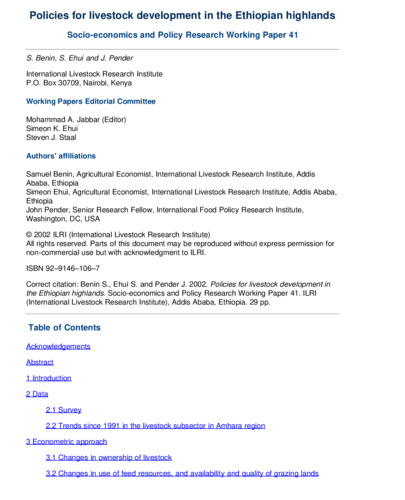Policies for livestock development in the Ethiopian highlands
Abstract
Since 1991, there have been significant changes in utilisation of feed resources in the Ethiopian highlands: while use of communal grazing lands and private pastures has declined, use of crop residues and purchased feed has increased. In addition, although use of animal health services, and adoption of improved livestock breeds and modern management practices have increased, ownership of various types of livestock has declined. Rapid population growth has contributed most to the declining trends in grazing resources and ownership of livestock, showing the negative effects of increasing pressure on already degraded resources in the Ethiopian highlands. Conversely, access to own land, increased participation in credit and extension programmes targeting livestock, and improvement in access to markets have had significant positive impacts on adoption of improved livestock technologies and ownership of livestock. Thus, reducing population growth, and improving access to markets and credit and extension programmes targeting livestock can enhance the role of livestock in improving food security and reducing poverty, especially in the mixed crop-livestock farming systems as exist in the East African highlands.

